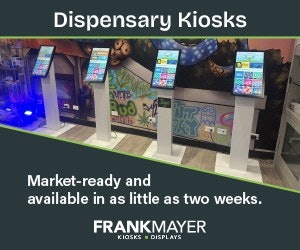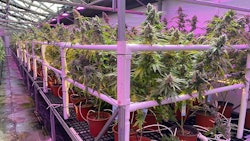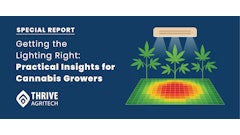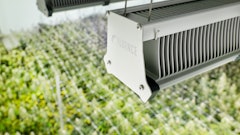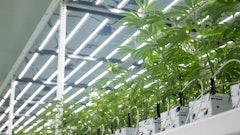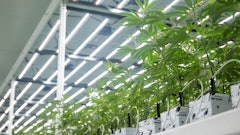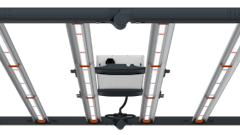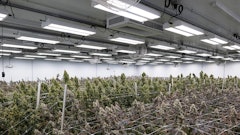
When it comes to LED rebates, many growers may be leaving money on the table.
According to Cannabis Business Times 2023 State of the Cannabis Lighting Market research, more than half (56%) of participants have not explored light-emitting diode (LED) rebates. A quarter (24%) of those participants said they are aware but haven’t investigated the utility savings, while nearly a third (32%) said they weren’t aware of these rebates at all.
Cannabis cultivators who are in the know and companies that do take advantage of these state-based programs have the opportunity to save hundreds of thousands of dollars—and sometimes more—in LED retrofits and installations.
“Awareness is the first barrier,” says Jeannie Sikora, senior energy engineer for CLEAResult, which works with utility companies to implement energy efficiency rebate programs. “If I were a grower, I would first check with my local utility company. Rather than trying to navigate the web page—if you don’t immediately see agricultural rebates through your local utility company—pick up the phone and call and talk to somebody.”
Because utility rebates are often state-mandated programs, the offers and structure can be very different depending on where you operate, Sikora says. But horticultural lighting rebates have become more common during the past few years, and it would be worthwhile for cannabis cultivators to explore what their local electric (and also gas) companies offer.
Once you’ve established that your utility offers energy efficiency rebates for horticultural lighting, here are steps you can take to obtain and maximize your rebate.
1. Determine the type of rebate incentives available.
Generally, there are two primary types of incentives available for horticultural lighting: prescriptive and custom. Prescriptive incentives offer money toward purchasing more energy-efficient equipment, whereas custom incentives do the same, but may require measurement and verification of the energy saved before they are awarded. Preapproval is almost always required before purchase.
Travis Higginbotham, vice president of cultivation for StateHouse, a cannabis cultivation company based in Salinas, Calif., said his team was able to secure a significant rebate that covered the entire cost of retrofitting the company’s greenhouses from HPS lighting to LED. And they didn’t have to seek or use capital to invest in the equipment.
“The California market has obviously been challenging now for quite a while, and 2022 was an incredibly difficult year,” Higginbotham says, noting that millions of square feet of cannabis production have gone offline in the past 18 months. According to an article published in April in SFGATE, the state lost more than 1,760 cultivation licenses since January 2022, which represented about a quarter of legal canopy or 19 million square feet. “With the price of flower coming down due to the saturation of product on the market, we decided to go into 2022 a little bit more aggressive and focused on being more cost effective, and then at the same time trying to optimize our square footage to produce more in less space,” Higginbotham says.
Their solution was to “play with their total square footage,” as Higginbotham describes it, rearranging the stages of production among the company’s five greenhouses to dedicate less space to flower and more to veg within the 205,000 square feet of space.
“One reason was to make sure that we did everything possible to prevent Hop Latent Viroid, and two, it was in an effort to give our plants a little bit more space during veg and a little bit longer veg time to reduce our plant count going into flower and reduce direct costs,” Higginbotham says. “And, at the same time, to potentially take advantage of plant sales.”
A key part of the equation to optimize space was increasing yield without expansion. With the rebate and other strategic infrastructure improvements, the company was able to boost light intensity in a smaller footprint. The whole process was quick and relatively easy, Higginbotham says. The lights were compatible with the HPS outlets, so it only took about a month from finalizing the rebate and purchase to converting the facility.
2. Work with suppliers who offer resources and support for rebates.
One of the reasons the rebate for the LED retrofit was so easy for Higginbotham is because the LED supplier handled the entire process—from application to working with Pacific Gas & Electric (PG&E) and the utility consultant to get approval and receive the maximum benefit possible.
Jushi’s Holdings Inc.’s LED supplier also offered the same support and made a LED rebate for the buildout of their 123,000-square-foot Scranton, Pa., facility possible, says Josh Malman, vice president of cultivation operations.
“One of the biggest barriers to getting rebates is the time and energy involved,” Malman says. The timeline for Jushi’s rebate, which covered 26% of the LED fixture cost, took about a year. His LED supplier worked with them from the very beginning when their Scranton facility was designed, helping to complete the application and calculate comparisons of what the energy usage load of legacy equipment would be compared to LED technology. “I think [cultivators] should be aware that rebates are out there and work with partners that will work alongside you. Not all companies have someone on the team that can run the rebate process.”
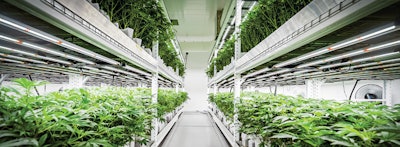
3. Check that your supplier is DLC certified.
Before moving forward with a lighting investment, Sikora suggests checking with the utility company to ensure that the LED supplier is eligible. Most of the time, utility companies require that products are on DesignLights Consortium (DLC)’s qualified products list.
4. Start exploring rebates as early as possible.
The team at Jushi Holdings Inc. knew before purchasing LEDs that the utility company, PPL Electric Utilities, would cover 5% to 26% of the total cost to outfit their indoor facility, which includes double and triple tiers.
“Capital costs for LEDs is a barrier; but there’s enough research out there now and visibility around LED companies that have the right technology that bury legacy lighting for indoor growing,” Malman says, noting the energy efficiency combined with the savings in HVAC costs (because LEDs produce less heat) make LEDs an obvious choice.
Two months after the lights were installed, Jushi Holdings Inc. received the rebate for the LED investment, a relatively fast turnaround and feasible because the company had started during the facility design stage.
5. Understand the full range of benefits available, and ask questions.
Most utility companies offer a range of prescriptive and custom incentives, Sikora says. Once you connect with a utility company, ask about other incentives that are available.
In addition to lighting fixtures, the ways that companies operate the equipment can result in savings, too, Sikora says.
“If they’re using dimming controls, for example, that could also be something that would qualify for additional rebates if your utility company allows custom incentives,” she says. “It helps if you have growing automation software that can report information and data because a lot of these programs, we have to measure and verify energy savings.”
Malman said that in addition to the rebate for the LED installation, they received rebates for airflow fans that were within the vertical rack systems because they were more energy efficient, something that was an unexpected surprise.
And when building out facilities, as Malman says, “Every cent counts.”

6. Document everything: Save purchase documents and calculate energy usage from current versus new equipment.
Most rebate programs require invoices to prove that the equipment was purchased, and a representative will visit to verify it was installed. Some utility programs require monitoring after installation to determine energy usage and the rebate amount.
Facilities that have sophisticated controls can more easily generate this data to provide the current energy usage, but if not, metering equipment can be installed and removed once data is collected, generally for about eight weeks, Sikora says.
“The more data that you can provide, the easier it becomes to prove that you’re saving energy over a typical baseline or an industry standard practice,” she says.
For Higginbotham at StateHouse, the equipment they use that requires electricity—such as fans, shade cloths and HVAC systems—was connected to separate meters, which made determining the energy used from lights alone seamless. This is crucial to get a full understanding of savings from LEDs and approval for rebates in a retrofit.
For Malman, these load calculations were provided by his LED supplier and the utility program implementer.
7. Measure the results.
After just one growth cycle at StateHouse, Higginbotham and his team have been impressed with the results of supplementing the greenhouse sunlight with LEDs. Despite being one of the most ideal places for agriculture, Salinas experienced record rainfall earlier this year, which impacted light levels, and thus the photosynthetic active radiation (PAR) plants were receiving, which can be a detriment to light intensity, thus yield and quality. Photosynthetic flux photon density (PPFD), which measures how much usable light, or PAR, the plant actually receives, and a way to track light intensity, doubled with the supplemental LEDs, Higginbotham says.
“We were close to 200 to 230 micromoles of light intensity with our artificial lighting before we were able to take advantage of the rebate,” Higginbotham says, not including intensity from the sun. “Now with new and more lights, we are hitting as high as 500 micromoles now of just artificial, supplemental lighting. So we were able in 1 acre to increase light levels by double. And we’re seeing yield follow the same trend where we’ve almost doubled.”
8. Don’t assume rebates will always be available.
Although rebate programs have become more common for horticultural lighting, that might not always be the case, Sikora says. If you’re interested in converting to LED technology and rebates are available in your state, act now.
“Don’t wait. Take advantage of incentives while they are here,” Sikora says. “The purpose of utility efficiency programs is to influence buyers to select higher efficiency equipment and systems. When that higher efficiency equipment starts becoming the norm, programs will reduce or eliminate incentives because they are no longer perceived as having influence on buying decisions.”
As Malman puts it, “LED is the future of cannabis lighting,” and the future is now.




